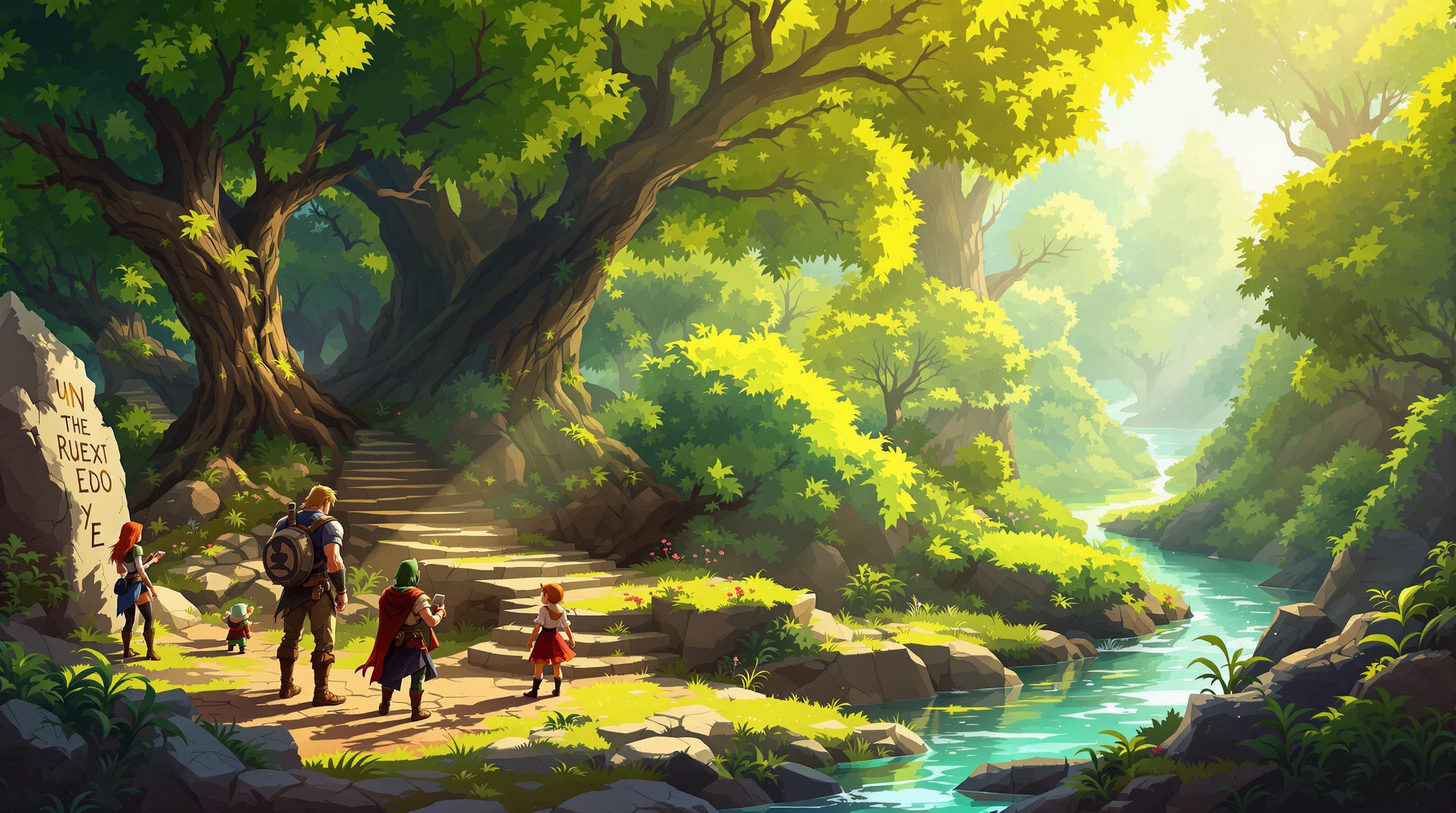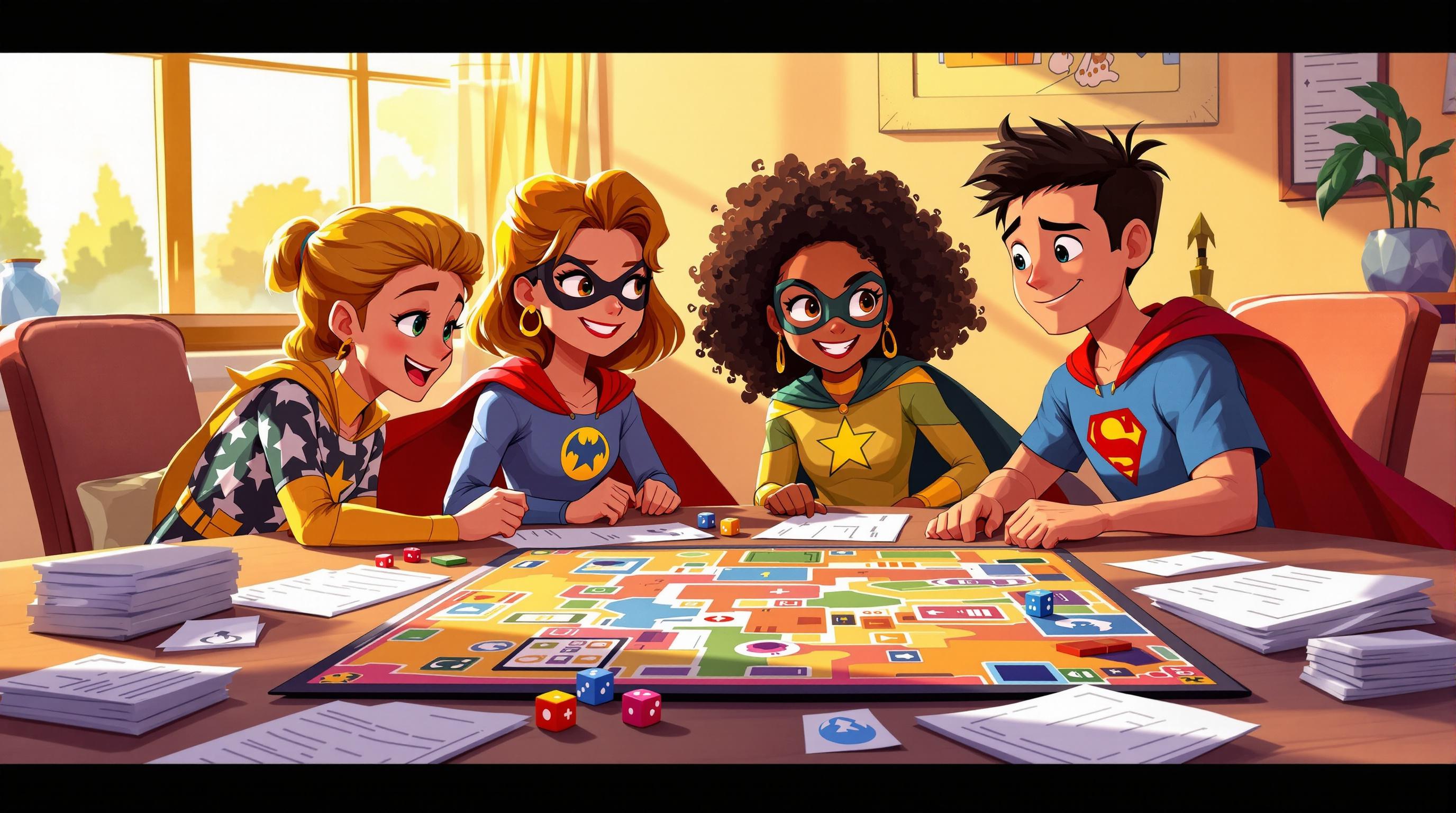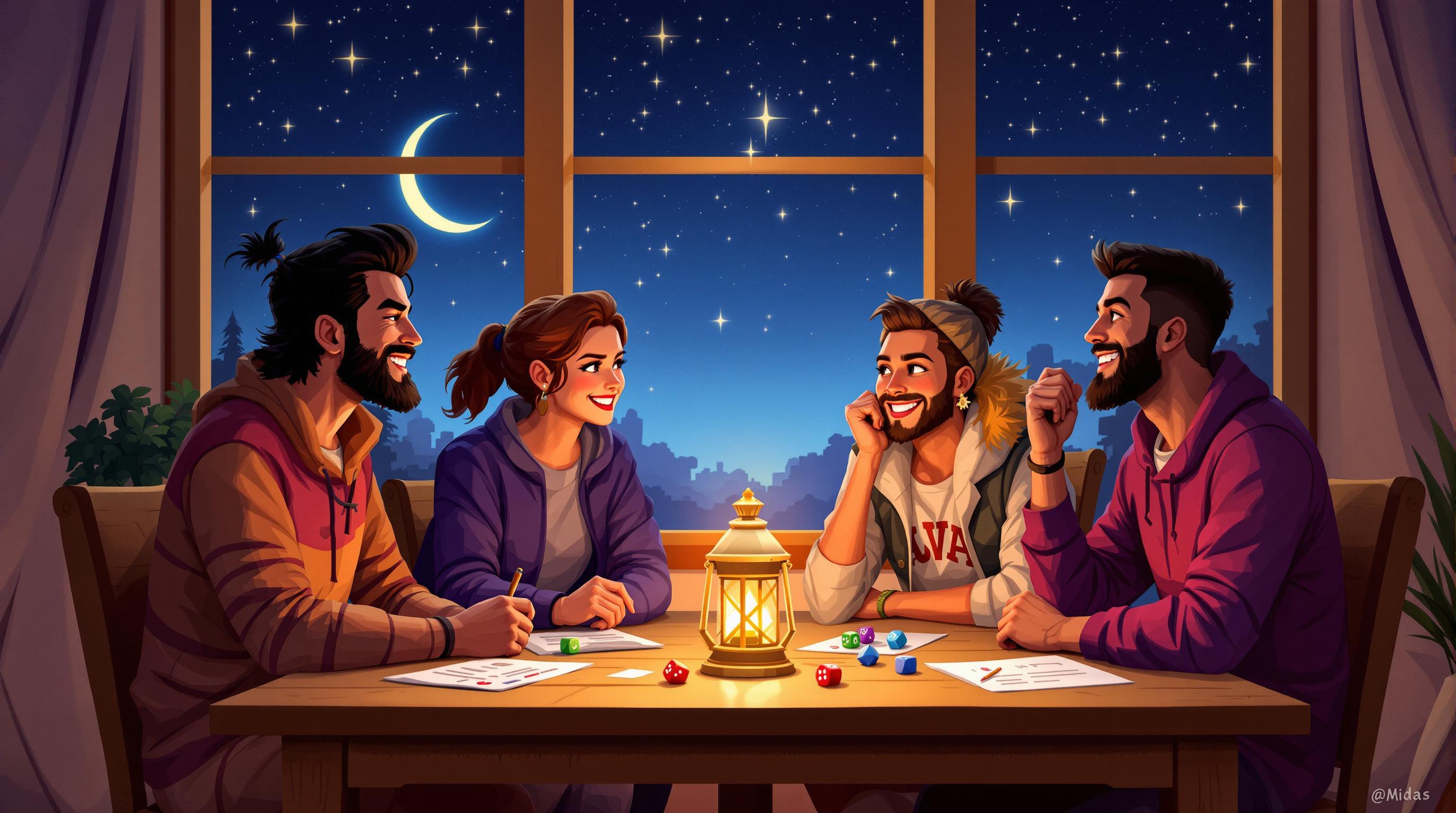Balancing loot in tabletop role-playing games (TTRPGs) ensures fair rewards, keeps players engaged, and supports the story. Too much loot can overpower players; too little can frustrate them. Here's a quick guide to creating a balanced loot system:
- Distribute Fairly: Ensure all players receive rewards suited to their roles and progression.
- Match Challenge to Rewards: Align loot with the difficulty of encounters (e.g., minor rewards for small battles, legendary items for boss fights).
- Mix Loot Types: Combine gold, gear, and non-material rewards like reputation or story-driven items.
- Control Economy: Prevent wealth imbalance with costs like upkeep or taxes.
- Use Loot Strategically: Tie items to the narrative, player backstories, or campaign world-building.
Balancing loot enhances gameplay and storytelling, making your campaign more immersive and rewarding.
10 Ways to Reward Magic Items without Breaking the Game
Categories of Loot and Their Functions
Knowing the different types of loot and their roles can make a TTRPG campaign more engaging and balanced. Each type contributes uniquely to gameplay and character growth.
Gold and Currency
Gold gives players the ability to buy gear, fund quests, or handle social situations like bribes or donations. Striking the right balance is crucial - too much gold can disrupt the economy, while too little limits player choices. The currency system should reflect the campaign's economic scale and offer players meaningful decisions [2].
Equipment and Magical Items
Equipment and magical items act as a direct way for characters to grow stronger. These rewards need careful planning to avoid redundancy and ensure fairness [1]. Early levels often feature basic items, while rare and legendary gear becomes available as characters advance.
Here’s a typical distribution based on character levels:
- Basic items (levels 1-4): Commonly found
- Enhanced items (levels 5-10): Appear more selectively
- Powerful items (levels 11-16): Rarely obtained
- Legendary items (levels 17-20): Extremely rare treasures
Non-Material Rewards
Non-material rewards add depth and lasting impact beyond physical loot [1][4]. These can include reputation boosts, secret knowledge, political sway, or access to exclusive locations. Such rewards deepen immersion and tie directly into the story, giving players a sense of progress that isn’t tied to material wealth.
Understanding these loot categories helps ensure rewards are balanced and support both the gameplay and the story effectively.
Methods for Balancing Loot
Distributing loot effectively is key to keeping a game engaging and balanced. It requires thoughtful planning to ensure players feel rewarded without disrupting the overall game dynamics.
Matching Loot to Challenge Level
To keep players motivated, align rewards with the difficulty of the challenges they face. For example, a dragon's treasure hoard should not only reflect the danger of the encounter but also add to the story's depth and sense of accomplishment.
Here’s a simple breakdown of reward tiers:
- Minor: Small amounts of gold, consumable items
- Moderate: Improved gear, mid-level magic items
- Major: Rare artifacts, significant wealth
- Boss: Legendary gear or rewards that can reshape the game
Controlling the In-Game Economy
Managing the in-game economy is crucial to avoid wealth spiraling out of control. Introduce systems like taxes, upkeep costs, black-market trading, or investment options to regulate player wealth and maintain balance.
Once the economy is stable, you can decide on the method of loot distribution - whether it’s random, fixed, or a mix of both.
Comparing Random and Fixed Loot Systems
| System Type | Advantages | Disadvantages | Best Used For |
|---|---|---|---|
| Random Tables | Adds surprise, encourages exploration | Can lead to imbalance | Side quests, minor encounters |
| Fixed Distribution | Ensures balanced progression, supports story | Predictable, less thrilling | Key story moments, boss fights |
| Hybrid Approach | Combines control and excitement | More complex to manage | Long campaigns or varied gameplay |
A hybrid system often strikes the right balance. Use fixed loot for critical story moments and boss fights, while random loot can add excitement to side quests or minor encounters. This mix keeps players engaged while ensuring the rewards align with the narrative.
sbb-itb-b8b00a5
Using Loot to Enhance the Story
Loot in TTRPGs isn't just about rewards - it's a way to enrich your story and keep players invested. When planned thoughtfully, treasures and items can become essential parts of your campaign's narrative.
Loot as Plot Devices
Placing key items in your story can create engaging storylines and motivate players. Here are some ways to make loot part of the narrative:
| Story Element | Example | Impact |
|---|---|---|
| Mystery Items | Artifacts with unknown powers | Sparks curiosity and exploration |
| Quest Catalysts | Map fragments or prophecy pieces | Opens up new storylines |
| Character Development | Items tied to personal backstories | Deepens character connections |
| World Building | Historical or cultural artifacts | Adds depth to the game world |
By weaving loot into the story, you make rewards feel earned and meaningful. At the same time, balancing the impact of these items is crucial to keeping the game fair.
Managing Powerful Rewards
Gradual Power Reveal: Unveil an item's abilities over time. This approach allows players to grow into their rewards without disrupting game balance early on.
Built-In Drawbacks: Give powerful items limitations. For instance, a legendary weapon could require constant magical upkeep or attract dangerous enemies.
"Magic items should be available for purchase and trade in any campaign, simply to preserve the balance of the classes." - EN World, Magic Items and Campaign Balance [3]
Fixing Loot Imbalances
If loot starts to overpower your players, there are ways to subtly restore balance without taking away the fun:
Environmental Challenges: Create situations where certain items lose their edge. For example, underground areas might make flying items useless, or magical zones could temporarily suppress enchantments.
Story-Driven Adjustments: Use the narrative to address overpowered loot. Some ideas include:
- Ancient curses that weaken overly strong items
- Thieves stealing high-value treasures
- Magical disruptions that temporarily neutralize certain items
"Offering opportunities to earn more loot, whether hidden or not, can be a great way of rewarding players and their characters in story-driven ways." - Roll for Fantasy, Loot Distribution Guide [1]
These approaches help keep the game balanced and exciting, ensuring that loot enhances the story without overshadowing teamwork and strategy. By addressing imbalances creatively, you maintain fairness and player enjoyment.
Advice for Dungeon Masters
Managing loot effectively is a key skill for any Dungeon Master. Here are some practical strategies to keep your game balanced and engaging:
Understanding Player Interests
Match loot to what motivates your players. Here's a quick guide:
| Player Type | Preferred Loot | How to Distribute It |
|---|---|---|
| Combat-Focused | Weapons, armor, potions | Reward after intense battles |
| Story-Driven | Artifacts with lore | Use items to reveal parts of the world |
| Exploration-Minded | Maps, hidden treasures | Place rewards in secret or hard-to-reach areas |
| Character-Development | Items tied to backstories | Connect loot to personal character arcs |
"The more loot you give the more there is to deal with, especially if the loot is incredibly diverse, and has many uses." - Roll for Fantasy, Loot Distribution Guide [1]
Influencing Game Pace with Loot
Loot isn't just about rewards - it can shape the flow of your game. Here are some ways to use it effectively:
- Enemy-Based Distribution: Assign loot by enemy type. For example, goblins might drop basic items (value: 2), while defeating a dragon could yield legendary treasures (value: 12). This keeps loot progression consistent and tied to the difficulty of encounters [2].
- Milestone Rewards: Use major story or gameplay milestones as opportunities to hand out special loot. This builds excitement and gives players a sense of accomplishment.
Drawing Inspiration from the TTRPG Games Directory

If you're stuck on ideas, the TTRPG Games Directory can be a great tool. It offers a variety of loot systems you can explore and adapt to fit your campaign, helping you create rewards that feel fresh and engaging.
Conclusion: Creating a Rewarding Campaign
Key Takeaways
Balancing loot isn't just about doling out rewards - it's about creating a system that drives player progression and keeps the campaign pacing just right. By focusing on elements like challenge alignment, story integration, and player motivation, you can design a loot system that enhances both gameplay and narrative flow.
Tips for Dungeon Masters
Exceptional Dungeon Masters see loot distribution as a dynamic process shaped by their players. Here are some essential aspects to consider:
| Aspect | Strategy and Impact |
|---|---|
| Economy Control | Keep an eye on resources to ensure challenges remain engaging and rewards stay meaningful. |
| Story Integration | Tie items into the narrative to deepen player connection and investment. |
| Player Feedback | Regularly gather input from players to fine-tune and improve your reward system. |
Explore tools like the TTRPG Games Directory to discover new mechanics and approaches that suit your campaign. The aim is to create experiences that enrich both the story and gameplay.
Think of your loot system as a tool that can adapt to your players' engagement and the campaign's needs. By staying flexible and making adjustments as you go, you'll be able to craft campaigns that feel balanced and memorable.
Use a mix of random and fixed loot systems to keep things exciting while maintaining consistency in the story. With careful observation and thoughtful tweaks, you can design a loot system that keeps your players engaged and enhances their overall enjoyment.
FAQs
How many magic items should a level 20 have?
For level 20 characters, standard TTRPG guidelines suggest around 6 permanent magic items. This strikes a balance between keeping the game challenging and allowing characters to feel appropriately powerful after a long campaign.
| Level Range | Recommended Items | Purpose |
|---|---|---|
| Level 1-5 | 1-2 items | Keeps early game challenging |
| Level 6-10 | 2-3 items | Supports character growth |
| Level 11-15 | 3-4 items | Boosts mid-tier power scaling |
| Level 16-20 | 4-6 items | Maintains balance at endgame |
Distributing magic items thoughtfully is crucial, especially at higher levels. Consider factors like your campaign's tone (high-fantasy settings might include more items, while grittier games may limit them), party size (ensure fair distribution), and challenge rating (treat especially powerful items as multiple). Also, think about how well items work with class abilities - synergy is great, but avoid creating overpowered combinations.
For more detailed advice, the TTRPG Games Directory offers tailored guidance on item distribution for various game systems, helping DMs handle high-level play effectively.


